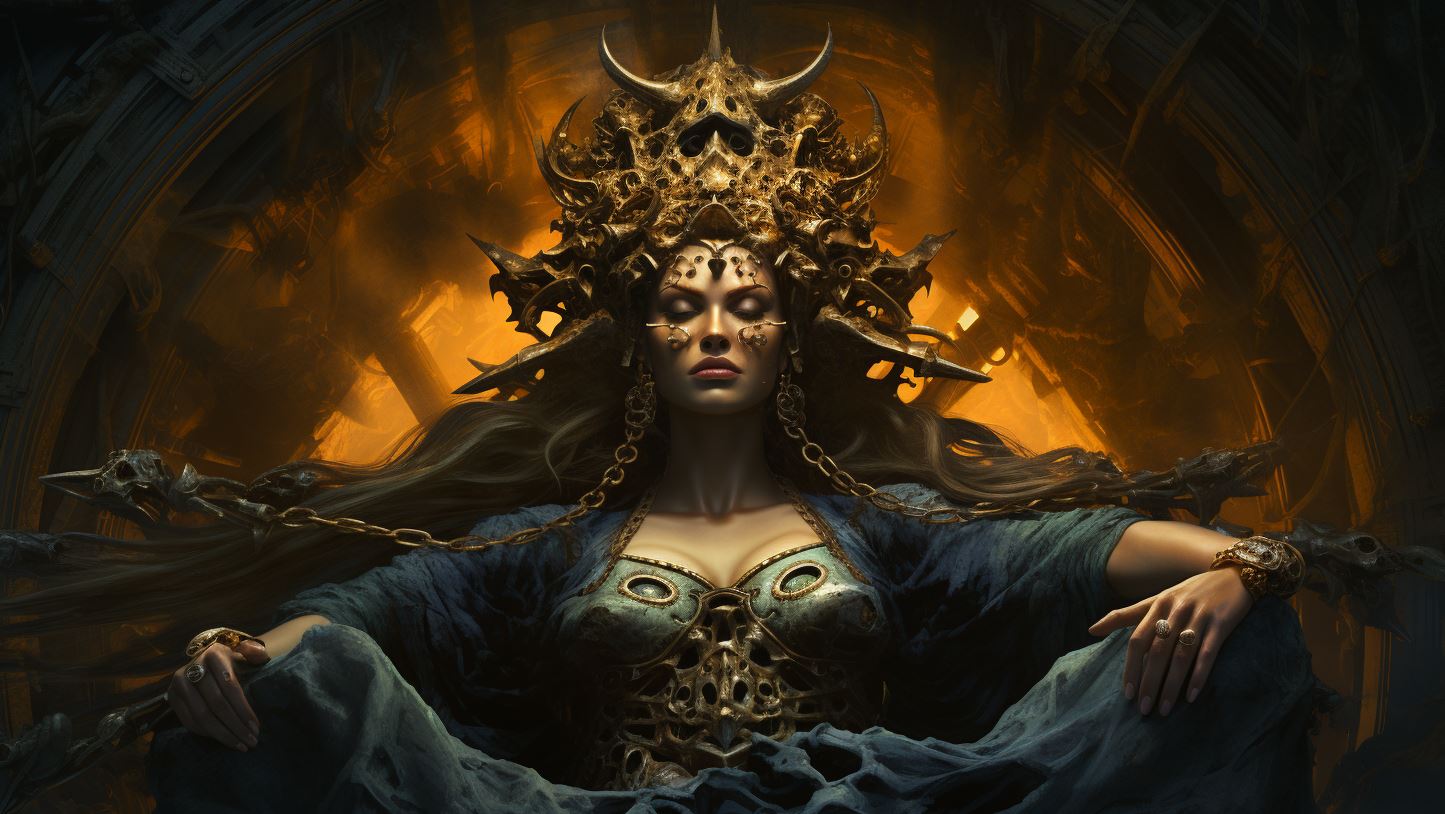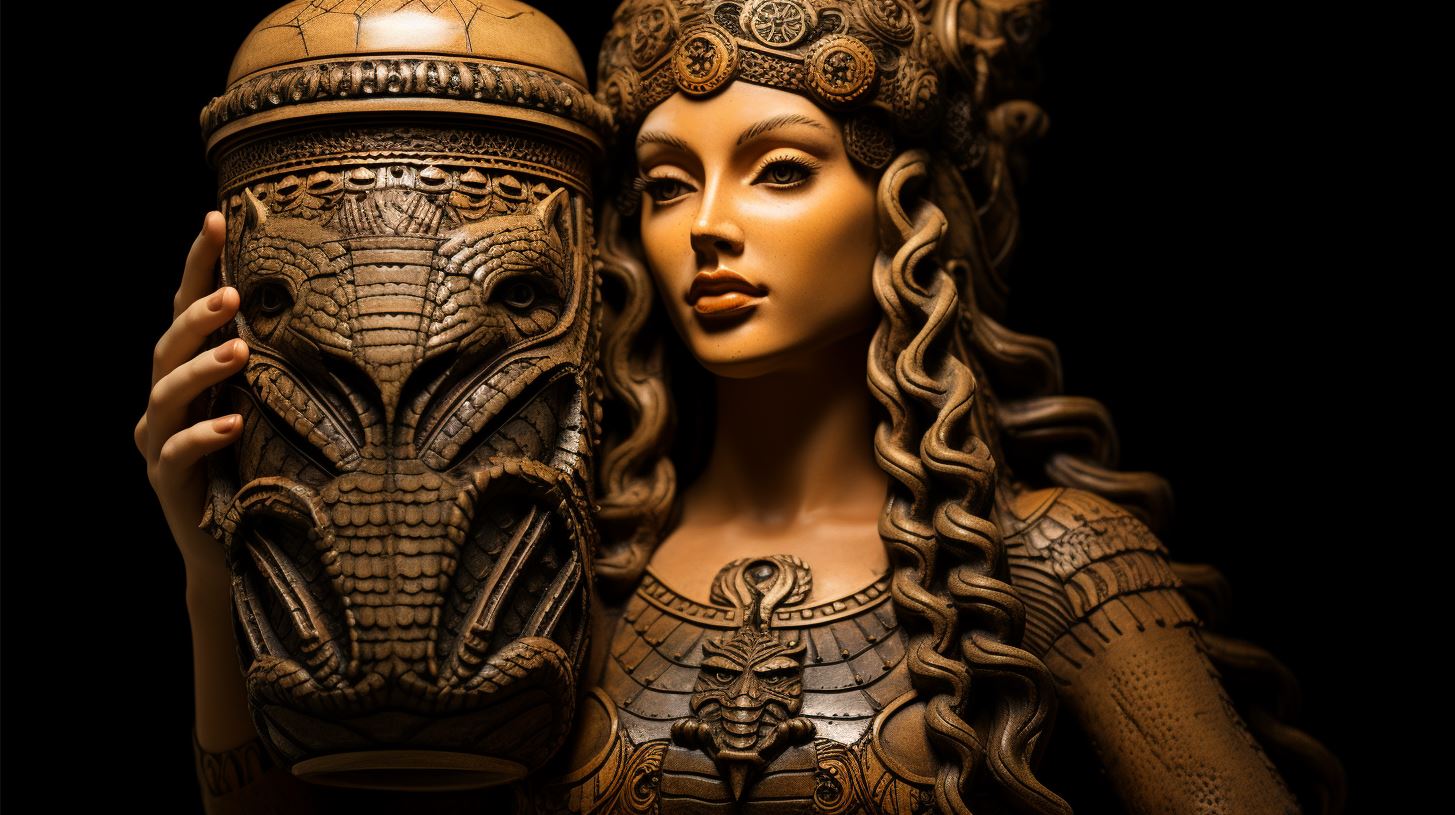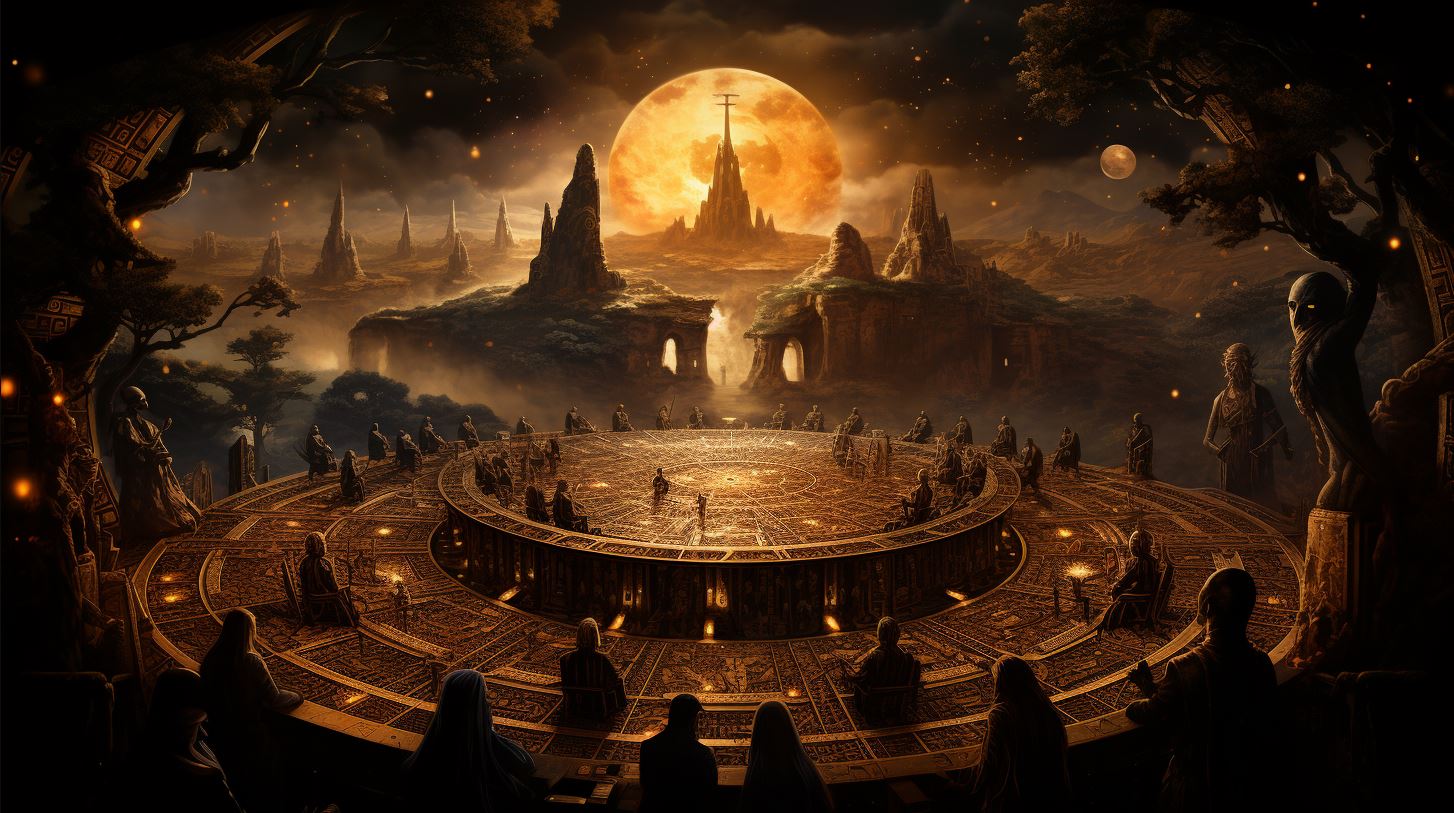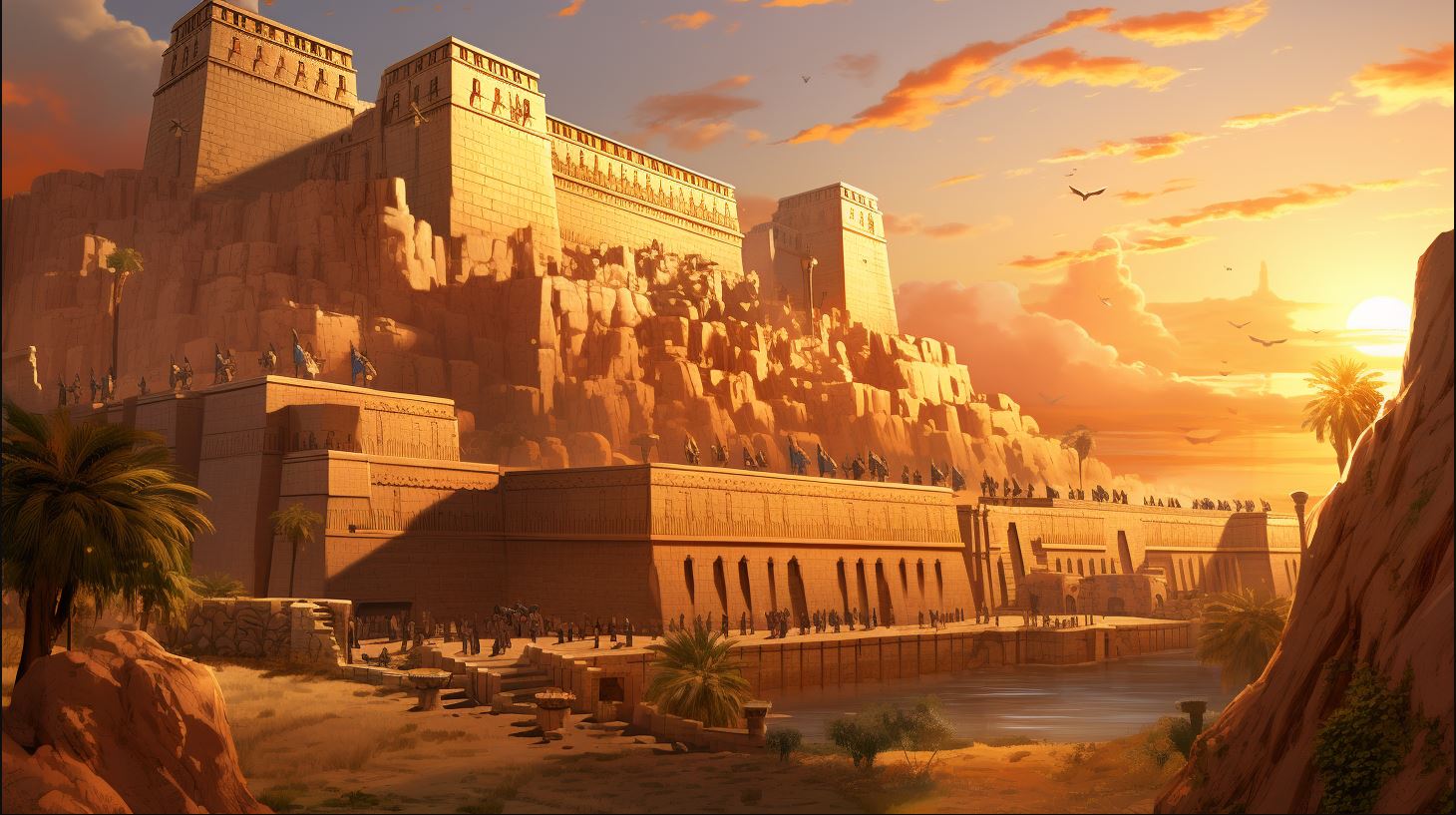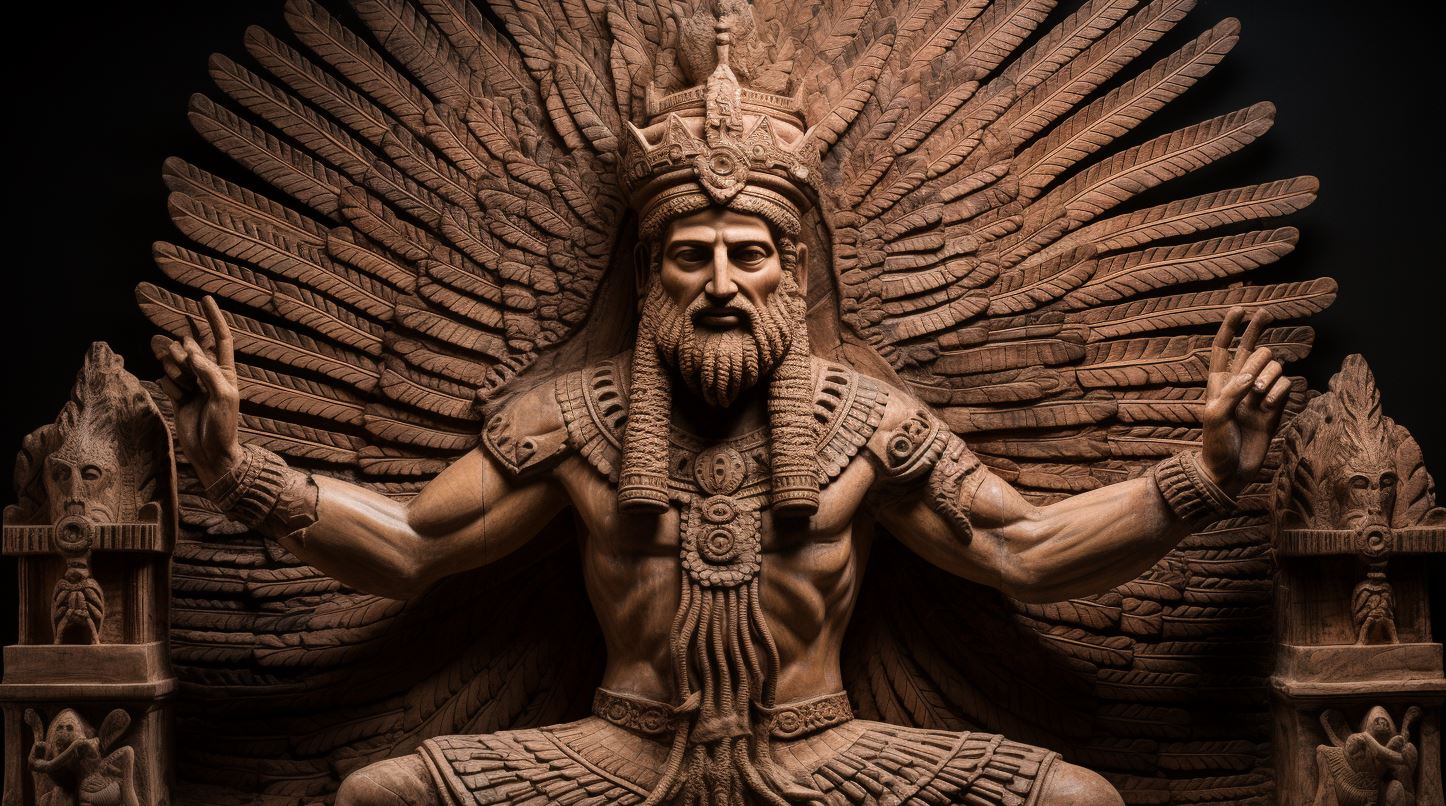The Origins of Allatum Goddess
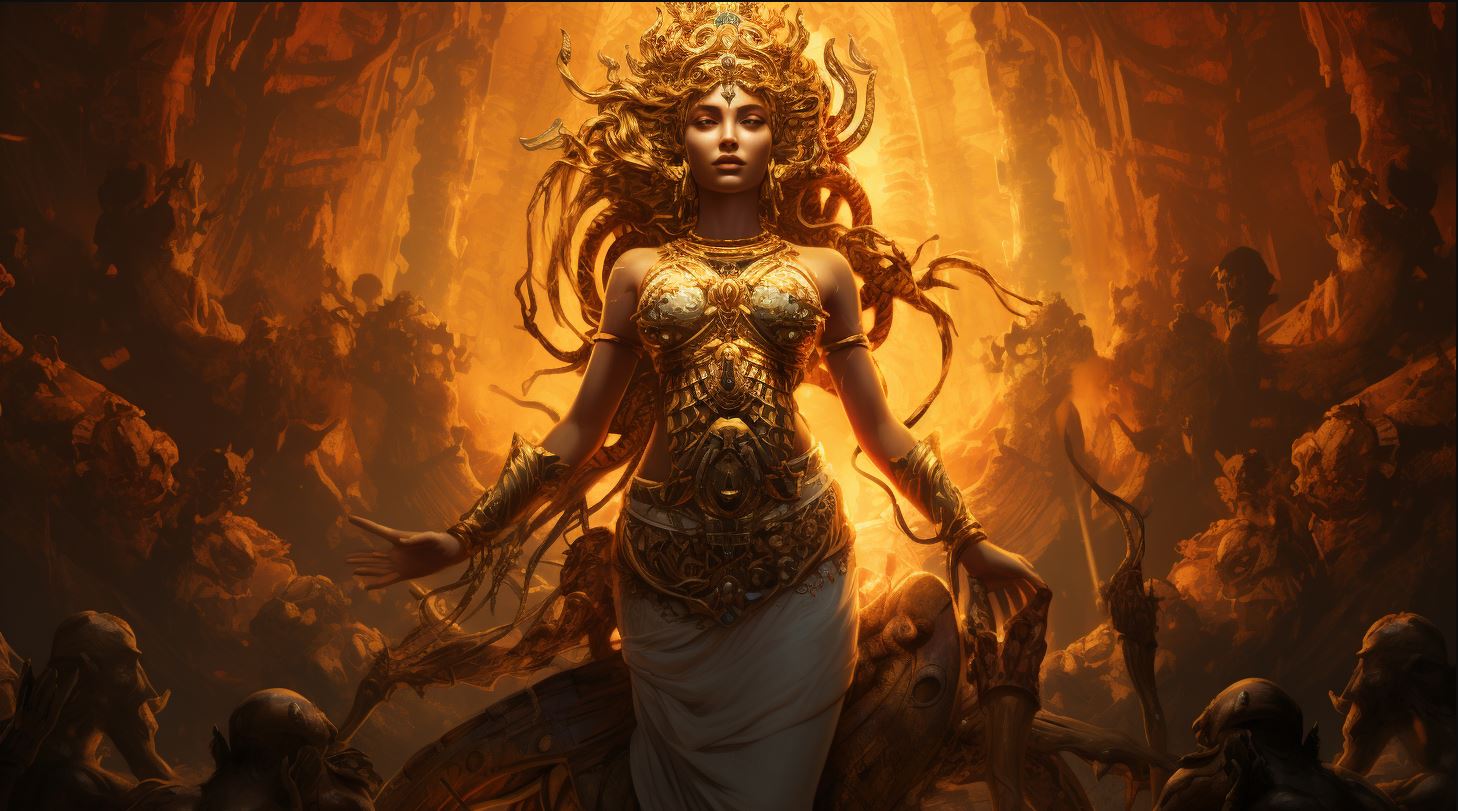
In ancient Mesopotamian mythology, the Allatum Goddess held a significant place as a deity of the underworld. Associated with Ishara and other underworld deities, she played a role in determining destinies.
While her main worship centers remain uncertain, Allatum had reverence in cities like Ur, Nippur, and Sippar. Beyond Mesopotamia, Allatum was also worshipped as al-Lat in pre-Islamic Arabian beliefs, with connections to al-‘Uzza and influences from Greco-Roman cultures.
In Mesopotamian demonology, she was identified as the wife of Bel and Nergal and the daughter of Ereshkigal.
The Origins of Allatum Goddess
In ancient Mesopotamian mythology, the Allatum Goddess holds a significant place as a deity associated with the underworld and the determination of destinies.
This section explores the origins and various aspects of Allatum’s beliefs and worship.
The Hurrian Deity in Mesopotamian Mythology
The Allatum Goddess, also known as Allatu, was revered as a Hurrian deity in Mesopotamian mythology. Her presence in the underworld played a crucial role in the beliefs of the Hurrian people.
The worship and reverence for Allatum extended beyond the Hurrian territories, with mentions in texts from cultures such as the Hittites.
Allatum’s Association with Ishara and Other Underworld Deities
Allatum maintained a close association with Ishara, another significant deity in Mesopotamian mythology. Together, they were invoked, and offerings were made to them, highlighting their interconnected roles in the realm of the underworld.
Allatum’s connections were not limited to Ishara; she also developed associations with Ereshkigal and Arsay, deities from neighboring cultures.
Worship and Cult Centers of Allatum Goddess
While the exact location of Allatum’s primary cult center remains uncertain, her worship spanned across various cities in Mesopotamia. Her veneration occurred in Ur, Nippur, Sippar, and other prominent Mesopotamian urban centers.
The worship of Allatum was not restricted to the areas inhabited by the Hurrians, emphasizing her widespread significance in the region.
Allani: The Queen of the Underworld
In the pantheon of Hurrian beliefs, Allani held a prominent position as the Queen of the Underworld.
She was revered for her significant role and unique attributes within the Hurrian mythology.
Role and Attributes of Allani in Hurrian Beliefs
Allani was believed to reside in a grand palace within the realm of the dead. As the Queen of the Underworld, she held immense power and authority over the realm of death.
She was perceived as a youthful figure, often associated with the color blue, which symbolized her connection to the concept of mortality.
In Hurrian beliefs, Allani was not solely associated with the underworld but also played a vital role in the determination of mortals’ destinies.
Her influence extended beyond the realms of life and death, as she guided the fates of individuals and shaped their paths.
Allani’s Involvement in Determining Mortals’ Fate
According to Hurrian beliefs, Allani possessed the ability to intervene in the lives of mortals and influence their destinies. She played a crucial role in the allocation of individual fates, weaving intricate webs of fortune and determining the outcome of human lives.
It was believed that mortals could invoke Allani’s favor through prayers and offerings, seeking her guidance in crucial life decisions. Her wisdom and influence were sought after, as individuals hoped to align their destinies with her benevolent power.
Iconography and Symbolism of Allani as the ‘Ray of the Earth’
Allani was often depicted as the ‘Ray of the Earth’ in Hurrian iconography. This association symbolized her connection to the earthly realm and her role in preserving the balance between life and death.
The representation of Allani showcased her youthful appearance, radiating an aura of both power and grace. Her images often displayed intricate details and accompanied by symbolic elements, embodying her authority as the Queen of the Underworld and the determiner of destinies.
Allatum Goddess beyond Mesopotamia
Exploring the influence and presence of the Allatum Goddess beyond the borders of Mesopotamia reveals intriguing connections to pre-Islamic Arabian beliefs and the amalgamation of Greco-Roman cultures.
Allatum’s Presence in Pre-Islamic Arabian Beliefs
Allatum, known as al-Lat in pre-Islamic Arabian traditions, held a significant position as a worshipped deity in various regions, including Mecca, Syria, Palmira, and Hatra.
Her cult spread across these areas, attracting devoted followers who revered her divine powers and sought her blessings.
The Connection with al-‘Uzza and Influence of Greco-Roman Cultures
In pre-Islamic Arabian beliefs, Allatum’s worship was closely associated with al-‘Uzza, another prominent pre-Islamic Arabian goddess. Their interconnected worship suggests a shared influence and possibly a synthesis of beliefs between the two deities.
The iconography of Allatum exhibited influences from Greco-Roman cultures, with attributes reminiscent of the Greek goddess Athena and her Roman counterpart, Minerva. This fusion of cultural influences resulted in captivating depictions that embodied both Arabian and Greco-Roman artistic elements.
Associated Cities and Evidences
- Allatum’s presence in Mecca is substantiated by historical records and archaeological findings that confirm the existence of her cult temple.
- References to Allatum in Syrian and Palmyrene inscriptions further affirm her worshipped status in these regions.
- The city of Hatra, known for its diverse religious practices, also had a significant following dedicated to Allatum Goddess.
The fusion of Arabian and Greco-Roman influences in the worship of Allatum highlights the interconnected nature of ancient cultures and the rich syncretism that shaped religious beliefs in the region.
Allatum in Mesopotamian Demonology
Allatum, the enigmatic goddess of the underworld, held a significant role as the wife of Bel and Nergal, and as the daughter of Ereshkigal. Her connections with these powerful deities elevated her status in Mesopotamian demonology.
Allatum as Wife of Bel and Nergal, Daughter of Ereshkigal
Allatum’s divine consort status was bestowed through her marriage to both Bel and Nergal, prominent deities in Mesopotamian mythology. As the wife of Bel, the god of heaven and earth, she shared in his authority and played a pivotal role in the divine hierarchy.
Additionally, as the spouse of Nergal, the god of war and the underworld, she exerted influence over the realm of the dead.
Ereshkigal, the queen of the underworld, bestowed Allatum with her divine lineage.
As Ereshkigal’s daughter, Allatum inherited her mother’s dominion over the realm of the dead and participated in the governance of the underworld. This familial bond emphasized Allatum’s importance as a powerful figure in Mesopotamian demonology.
Possible Connections with Arsay and Classification as Demon and False Idol
While evidence regarding the potential relationship between Allatum and the goddess Arsay remains limited, scholars suggest the existence of a connection between these two underworld deities. Similarities in their domain and association with the underworld have led to speculation about a possible undetermined bond between them.
Furthermore, within the context of Mesopotamian demonology, Allatum has been categorized as both a demon and a false idol. These classifications reflect the perception of her as a deity with supernatural abilities who could be invoked or worshipped but also served as a potential danger or deceptive presence.
In summary,
- Allatum’s role as the wife of Bel and Nergal, and daughter of Ereshkigal, positions her as a significant deity in Mesopotamian demonology.
- The potential connection between Allatum and Arsay adds to the intrigue surrounding her divine associations.
- Her dual classification as a demon and a false idol underscores the reverence, fascination, and caution surrounding her worship and influence in ancient Mesopotamia.











